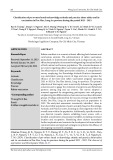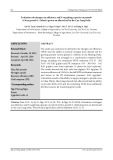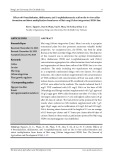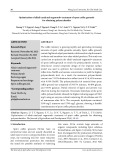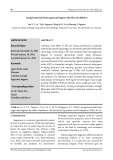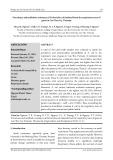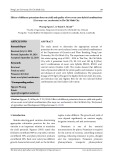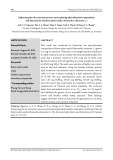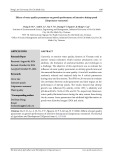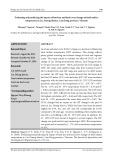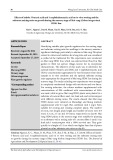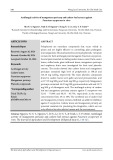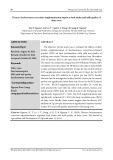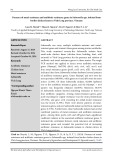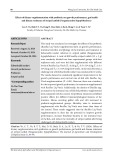
128 Nong Lam University, Ho Chi Minh City
The Journal of Agriculture and Development 23(Special issue 1) www.jad.hcmuaf.edu.vn
Improving propagation of the rare plant Huperzia squarrosa using cuttings and in vitro
techniques
Vuong D. Nguyen, Giang K. T. Le, Vy T. H. Dang, & Phong V. Nguyen*
Faculty of Biological Sciences, Nong Lam University, Ho Chi Minh City, Vietnam
ARTICLE INFO ABSTRACT
Research Paper
Received: August 29, 2024
Revised: October 14, 2024
Accepted: October 21, 2024
Keywords
Apical cutting
Huperzia squarrosa
IBA
MS medium
Rooting
*Corresponding author
Nguyen Vu Phong
Email:
nvphong@hcmuaf.edu.vn
The tassel fern, Huperzia squarrosa, is a rare and medicinally valuable
plant known for containing Huperzine A. It propagates naturally
through spores, rhizomes, cuttings, and clump division, but with a
slow multiplication rate. This study aimed to optimize propagation
conditions for H. squarrosa using stem cuttings and in vitro culture
techniques to support its preservation and development. Apical and
stem cuttings were treated with varying concentrations of indole-
3-butyric acid (IBA) and naphthaleneacetic acid (NAA) before
being planted in a substrate of coir dust, charcoal dust, and burnt
rice husk (3:2:2). Apical cuttings treated with 1500 ppm IBA for 30
min showed the highest rooting success, identifying this method
as optimal for propagation. Additionally, surface sterilization with
a 40% bleach solution, followed by antibiotic treatment, achieved a
73.8% clean sample rate. In vitro culturing on ¼ MS (Murashige and
Skoog) medium resulted in 70% survival and 55% rooting after 60
days. The highest callus formation rate (13.3%) was achieved with
0.01 mg/L IBA and 0.3 mg/L Kinetin, while the addition of 3 mg/L
Glutamine did not significantly enhance callus induction. Ongoing
research focuses on enhancing complete plant regeneration and
improving the efficiency of in vitro propagation for H. squarrosa.
Cited as: Nguyen, V. D., Le, G. K. T., Dang, V. T. H., & Nguyen, P. V. (2024). Improving propagation of
the rare plant Huperzia squarrosa using cuttings and in vitro techniques. The Journal of Agricultural
and Development 23(Special issue 1), 128-138.






